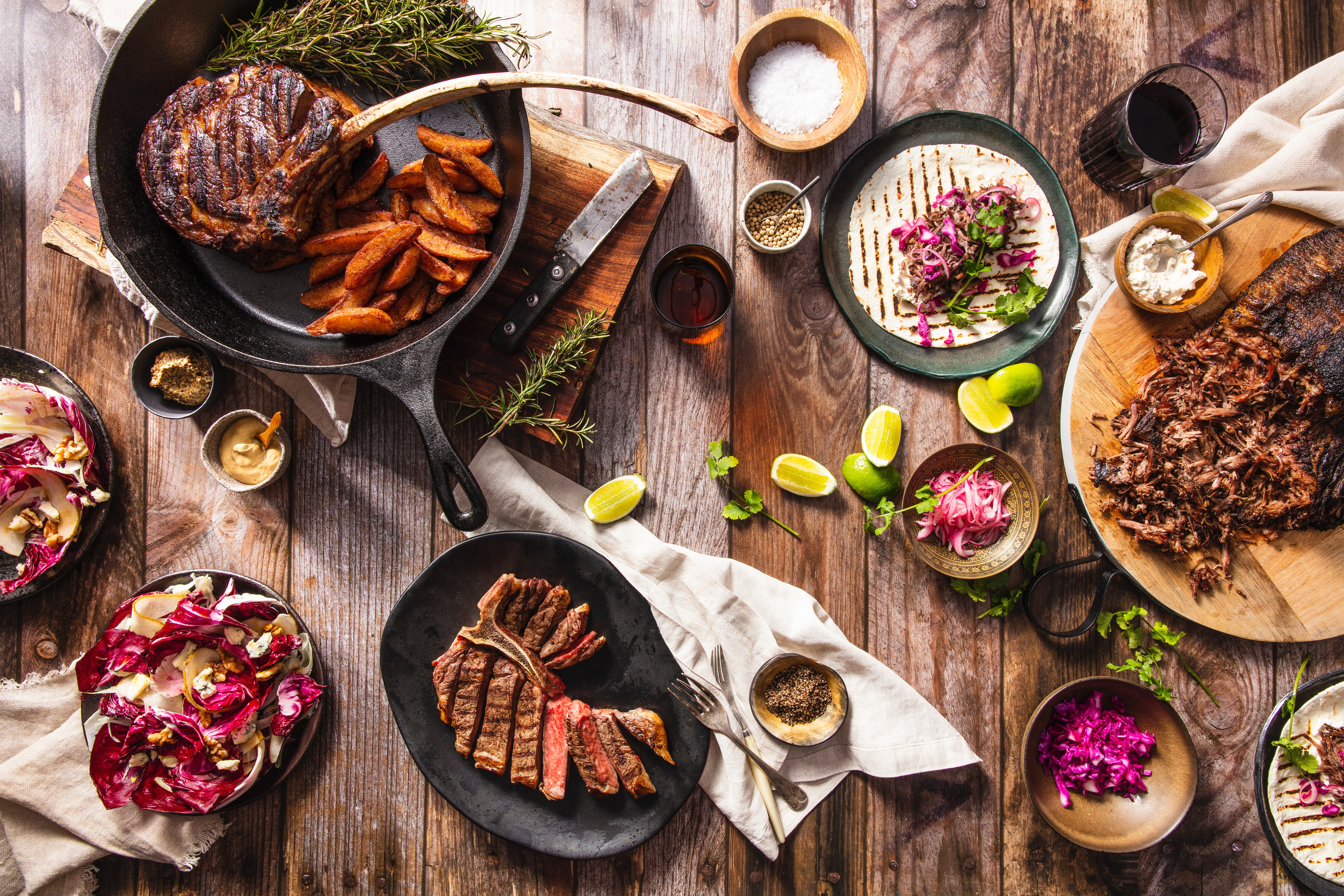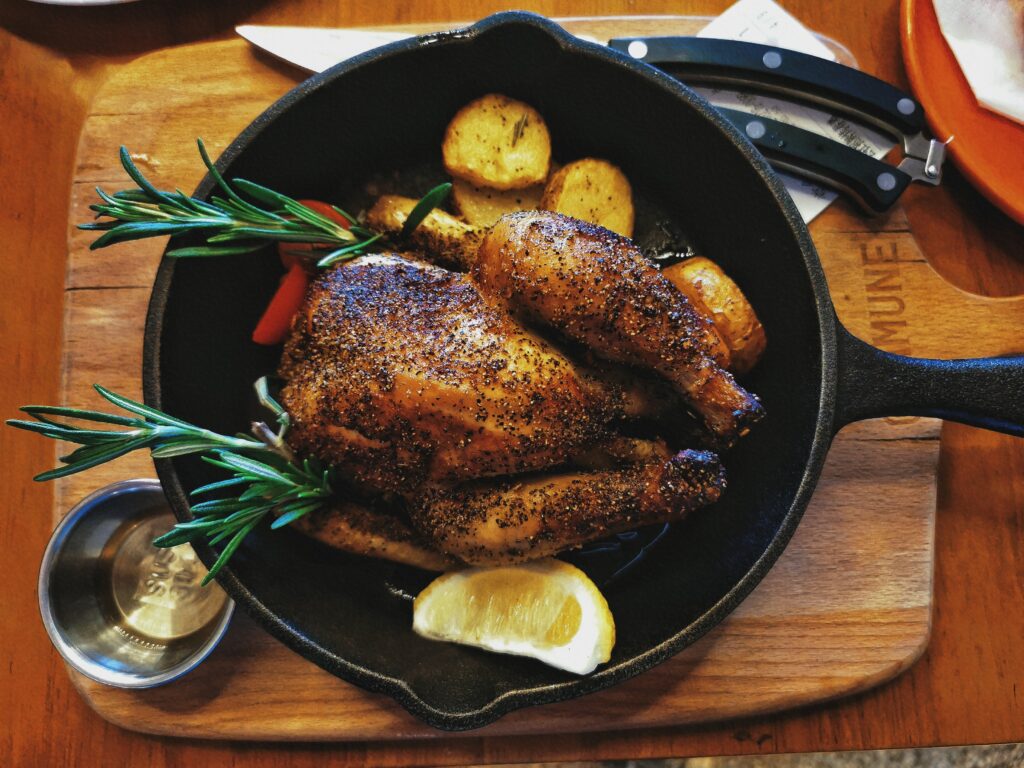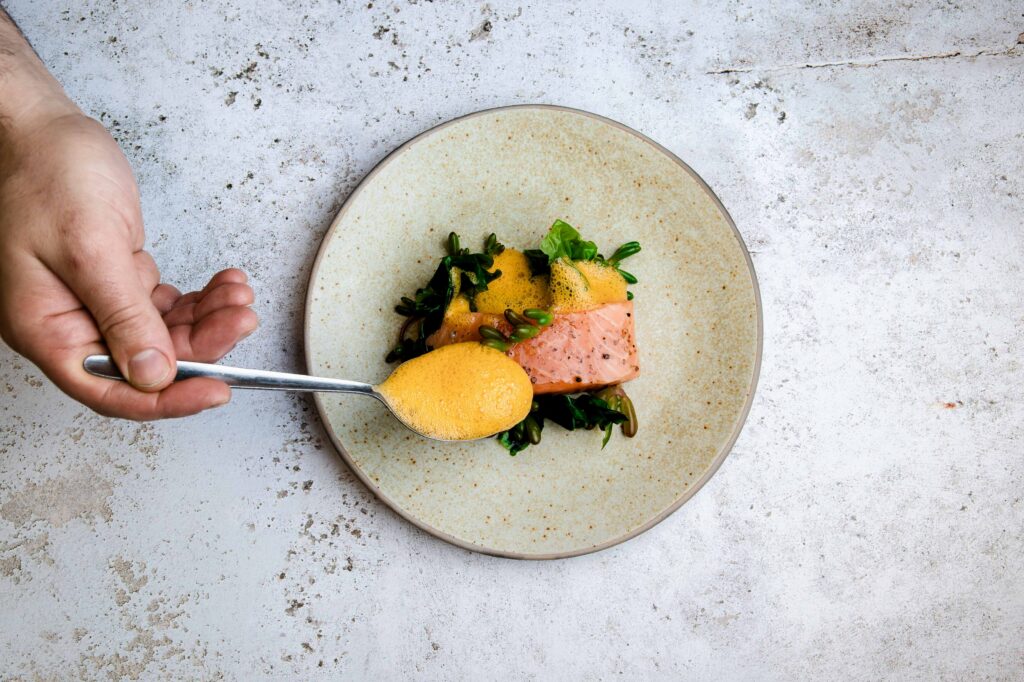La quête du vin parfait pour accompagner un plat de viande est une aventure gustative enrichissante. Préparez-vous à embarquer dans un voyage œnologique.
This subtle art of marrying the flavors of meat with those of wine can transform an ordinary meal into an extraordinary culinary experience. When the principles of wine and meat pairing are mastered, each bite and sip harmonizes to create a symphony of flavors on the palate.
The aim of this article by Oeni, your wine cellar management app with personal sommelier (available on iOs and Android), is to guide you through the basics of these pairings, focusing on the selection of wines that sublimate different types of meat. Whether you're preparing a juicy steak, delicate poultry or game stew, there's a wine to magnify every dish. Prepare to embark on an oenological voyage, where each pairing is a discovery and a celebration of taste.
The basics of wine and meat pairing
The secret to successful wine and meat pairing lies in understanding the balance of flavors. The key characteristics to consider are tannins, acidity, wine body and aromas. Tannins, found mainly in red wines, have the ability to soften on contact with meat proteins, creating a balance on the palate. Acidity, meanwhile, plays a crucial role in the wine's freshness, capable of cutting through the richness of certain meat dishes.

For red meat
Red meats, such as beef or lamb, go well with full-bodied, tannic red wines. An undisputed classic is Cabernet Sauvignon, with its deep black fruit notes and robust tannic structure, ideal for grilled steak or roast beef. For a more subtle but equally rich option, a Merlot offers a more velvety texture with notes of plums and blackberries, perfect for dishes like filet mignon.
If you're in an adventurous mood, an Argentine Malbec, known for its intense aromas of black cherry and plum, can be an excellent companion for roast lamb or beef bourguignon. For spicy dishes or smoked meats, a Syrah or Shiraz brings notes of black pepper and dark fruit, balancing the strength of the spices.
Classic red meat pairings
When it comes to pairing wines with red meat, certain combinations have become classics thanks to their perfect harmony. A red Bordeaux is a traditional choice for a cheese and charcuterie platter. Its complexity and richness combine magnificently with meats such as duck or beef in sauce.
For a more modern approach, a Burgundy Pinot Noir, with its red fruit notes and softness on the palate, creates an interesting contrast with less fatty red meats such as beef fillet or carpaccio.
In short, the perfect match between wine and red meat depends on the richness of the meat and the structure of the wine. By following these tips, you can turn every meal into a memorable culinary experience, where wine and meat intertwine for an unforgettable taste dance.

Choosing the right wine for white meats
When it comes to white meats such as poultry or pork, the choice of wine must be subtle and balanced. These meats, often more delicate in flavor, require wines that complement their taste without overpowering it.
For poultry:
Poultry, such as chicken or turkey, is naturally mild and versatile. An aromatically rich white wine, such as a well-balanced Chardonnay, can add depth to dishes like roast chicken or stuffed turkey. For lighter preparations, such as grilled or creamed chicken, a lively, tangy Sauvignon Blanc or a slightly sweet, fruity Riesling can add a refreshing note.
For Pork:
Pork, a milder meat with a slight creaminess, pairs well with wines that offer a balance between fruity sweetness and acidity. A light Pinot Noir, with its red fruit notes and finesse, is a perfect complement to roast pork or pork chops. Alternatively, a Grenache, with its roundness and black fruit aromas, can sublimate glazed or spicy pork.
The game exception
Game, such as venison, wild boar or pheasant, presents unique and often more pronounced flavors. These meats call for wines with an equally assertive personality.
Syrah/Shiraz:
For rich, flavorful game meats, a robust Syrah or Shiraz is an excellent choice. With its spicy notes of black pepper and dark fruit, it can stand up to the richness of the game, creating a harmonious match on the palate. An Australian Shiraz, in particular, with its rich palette of flavors and lingering finish, can magnificently accompany venison stew or roast wild boar.
Zinfandel:
Zinfandel, known for its medium to full body and intense berry aromas, is another ideal option for game. Its spicy nuances and rich mouthfeel can complement the deep flavors of a pheasant pâté or game terrine.
As you explore these pairings, it becomes clear that the world of wine offers incredible diversity to accompany all kinds of meats. Whether you opt for poultry, pork or game, there's a wine that will not only match your dish, but elevate it to a higher gastronomic level. The key is to consider the meat's intrinsic flavor and choose a wine that harmonizes with it, creating a culinary experience that's both balanced and memorable.
The influence of sauces and marinades

The choice of wine must also take into account the sauces and marinades that accompany the meat. These elements can radically transform the taste profile of the dish, requiring extra thought in wine selection.
For rich, spicy sauces:
When meat is accompanied by rich, spicy sauces, such as pepper sauce or barbecue marinade, a wine with distinct structure and personality is required. A bold Cabernet Sauvignon, with its robustness and oaky notes, can balance these intense flavors. For spicy dishes, a Grenache or Zinfandel can offer the perfect balance with their ripe fruit aromas and light sweetness.
For light, lemony marinades:
For light marinades, especially those with a touch of acidity such as lemon or vinegar, lighter, fresher wines are preferable. A fresh, tart Sauvignon Blanc or Vin Gris can complement these dishes without overpowering them, adding a refreshing dimension to the meal.
The role of personal preferences
While the traditional rules of wine and meat pairing provide an excellent foundation, it's essential to recognize the importance of personal preference. Every palate is unique, and what may be a perfect match for one person may not be for another.
Experimentation and Discovery:
Feel free to experiment with different pairings to discover what appeals to you personally. For example, while a Pinot Noir is traditionally recommended with duck, you may find that a Châteauneuf-du-Pape with its richness and complexity better suits your preferences.
Tips for experimentation:
When experimenting, consider not only the type of meat, but also its preparation, sauce and accompaniments. A slightly sweet Riesling may surprise with a spicy pork, while an Italian Barolo might go beautifully with herbed braised beef.
By considering sauces, marinades and your personal tastes, you can refine your wine choices to create pairings that not only respect the principles of flavor harmony, but also reflect your personal style. Exploration and experimentation are key to discovering new, exciting and satisfying pairings.
Conclusion
Discovering the ideal wine to accompany your meat is an exciting and rewarding culinary adventure. Throughout this article, we've explored the nuances of pairing different types of wine with meats, emphasizing the importance of balancing flavors, considering sauces and marinades, and, above all, paying attention to your personal tastes.
Remember that the rules for pairing wine and meat are not rigid, but rather guidelines to begin your exploration. Experimentation is the key to discovering what works best for you. Whether you prefer a classic Cabernet Sauvignon with your steak or dare a bold Riesling with your spicy chicken, every wine choice is an opportunity to add an extra dimension to your meal.
Ultimately, the perfect match between wine and meat is the one that brings you the greatest satisfaction and pleasure. Don't hesitate to think outside the box and create your own traditions. Every bottle of wine you open and every dish you prepare is a new chance to discover unexpected taste harmonies.
We hope the tips and suggestions presented in this article will inspire you to explore the vast world of wine and meat pairing, and find your own path in this tasty quest. So, raise your glass and enjoy every bite and sip of your next culinary feast. Happy tasting!





